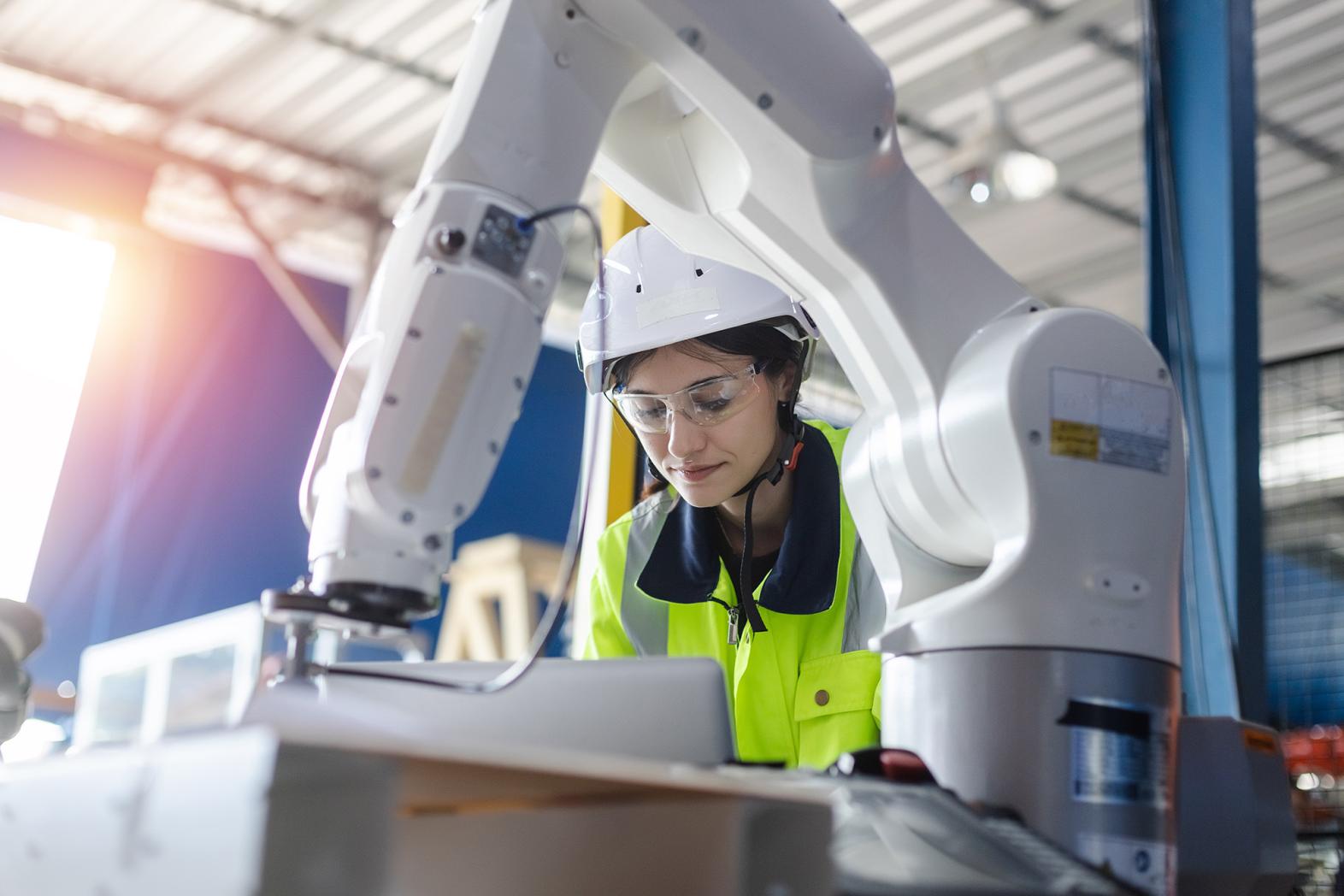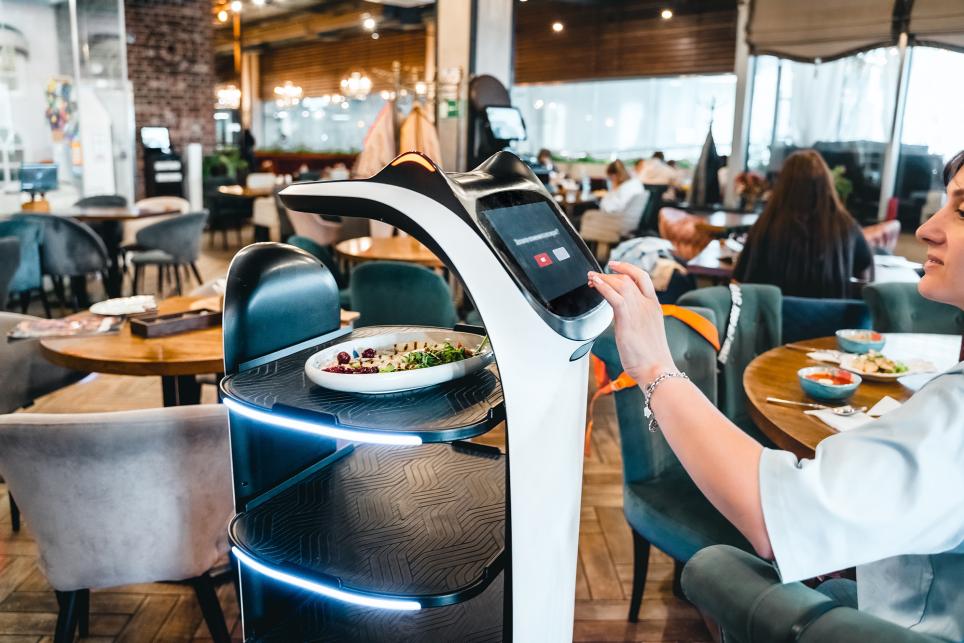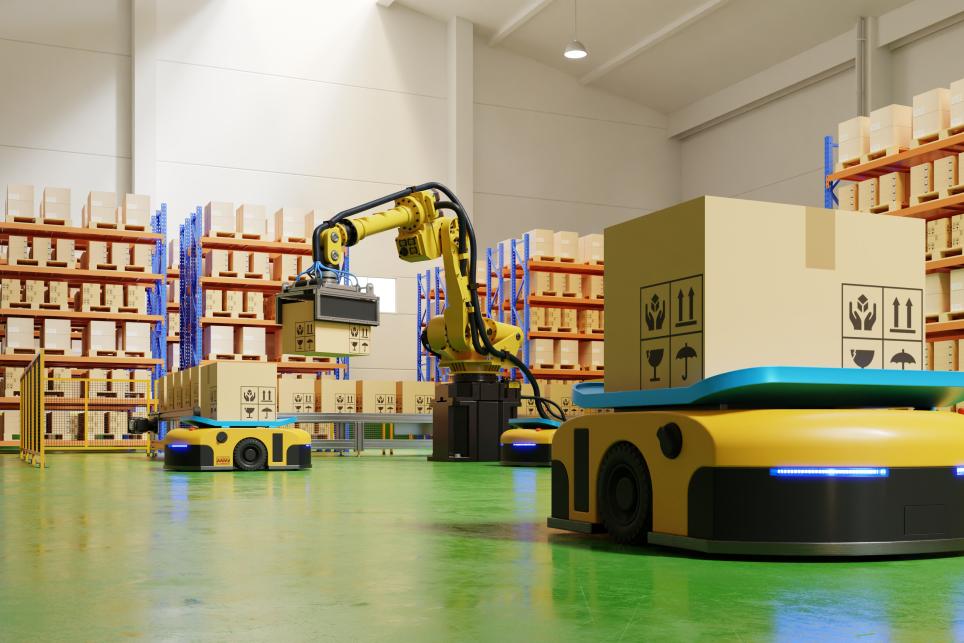In many manufacturing facilities, warehouses, e-commerce fulfillment centers, and even in restaurants, airports, and homes, robots are being deployed to assist people by performing everyday tasks independently. To ensure these robots can work alongside people and increase convenience, customer service, and efficiency without putting individuals at risk, UL Standards & Engagement has published robotic safety standards to guide their development.
Which industries use robotic automation? What are some examples of manufacturing or industrial robots?
Robotic automation is used throughout the full lifecycle of a product or process – in industries ranging from mining, oil and gas, and refining, to manufacturing, shipping, and recycling. Industrial robotic equipment and systems are used in indoor and outdoor applications such as automated material and product handling, loading, towing, die-casting, welding, parts assembly, and paint spraying.
What are some examples of commercial robots?
Commercial robots include robots used for service, communication, information, education, and entertainment. These include robot servers and waiters, guide robots in museums and airports, and robot companions for the general public.
What are the risks associated with using commercial and industrial robots?
There are many safety risks that must be addressed before deploying robots in commercial and industrial applications. Without the proper safeguards, a robot may not be able to detect objects and persons in its path of moment, and it may not be able to respond appropriately to interaction with vulnerable persons. Robots can also present a risk of electric shock or fire hazard if their electrical systems and batteries are damaged, malfunctioning, or counterfeit. Additionally, robots are at risk for cybersecurity attacks. Our robotic safety standards address these risks, ensuring safe operation for any commercial or industrial robots that conform to their requirements.
How do UL robotic safety standards make robots safer?
UL robotic safety standards make robots safer by ensuring that products are designed and constructed according to rigorous safety requirements. Our catalog includes standards for commercial and industrial robots including manufacturing robots and warehouse robots, robot waiters, service robots, and companion robots. Some of these robotic safety standards are below:
- UL 1740, Standard for Safety for Robots and Robotic Equipment – This robotic safety standard covers industrial robots and robotic equipment that perform tasks such as parts assembly and transfer, automated material handling, inspection, welding and deburring, and automated storage and retrieval. The standard helps guide the development of these units with requirements for construction, performance, and protection against injury to persons. These include requirements to ensure secure mounting, prevent unintentional contact with moving parts such as belts and pulleys, and automatically stop robots if safety guards are activated.
- UL 3100, the Standard for Safety for Automated Mobile Platforms (AMPS) – This robotic safety standard covers autonomous mobile robots used in warehouses and e-commerce fulfillment centers for lifting, carrying, product picking, towing, and similar activities. It features requirements for applicable safety risks in industrial environments including hazard and injury prevention, object detection and avoidance, risk assessment, functional safety, robotic payloads, and product integration. It also reduces fire risks through requirements for batteries and battery management systems.
- UL 3300, the Standard for Safety for Service, Communication, Information, Education and Entertainment Robots – This robotic safety standard covers commercial robots that perform tasks independently in public spaces and commercial spaces, such as restaurants, grocery stores, and banks – interacting with, and working alongside people to help increase convenience, customer service, and efficiency. It features requirements and safeguards for categories including mobility, object detection and avoidance, external manipulation, interaction with vulnerable persons, and fire and shock hazards.
Fast Facts
In 2022, more than 3.9 million robots were in operation globally. (Source: International Federation of Robotics)
• 79% of global robot installations (437,599 units) are in five markets – China, Japan, the U.S., South Korea, and Germany. (Source: International Federation of Robotics)
Asia is the world’s largest market for industrial robots, with 404,578 units installed in 2022 (Source: International Federation of Robotics)
Since 2020, industrial robots have been used most in the electrical/electronics industry, producing household appliances, electrical machinery, semiconductors, solar panels, computers, telecommunication devices, and video and electronic entertainment devices. (Source: International Federation of Robotics)


